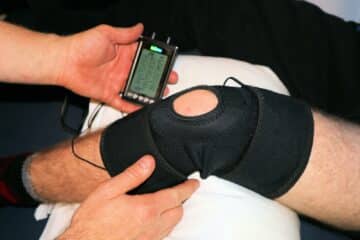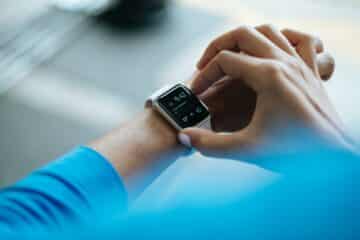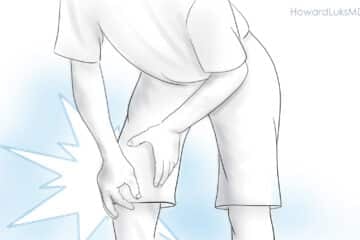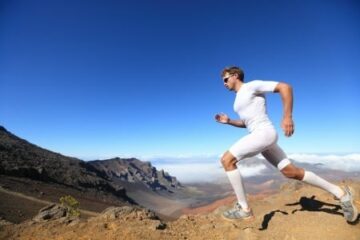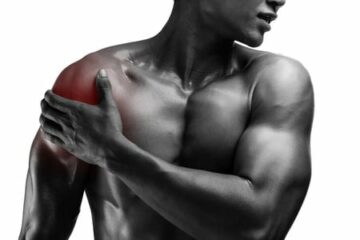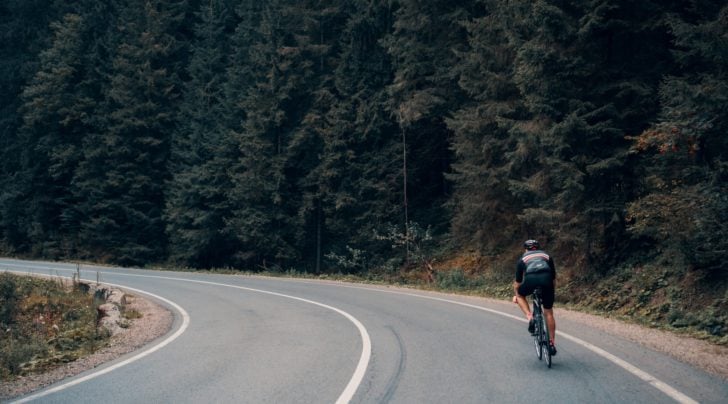
Show Notes
Paul and Howard talk about air, exercise, lung function, and breathing in an age of wildfires and coronavirus. There is a fairly crap transcript here.
Topics:
- Viruses and exercise
- A primer on lung function during exercise
- How much outdoor exercise is safe when air quality is lousy
- Best ways to limit your pollutant exposure
Readings:
- Can air pollution negate the health benefits of cycling and walking?
- Air Pollution–Mediated Susceptibility to Inflammation and Insulin Resistance: Influence of CCR2 Pathways in Mice
- Should You Stop Exercising During Wildfire Season?
- Ambient Particulate Air Pollution and Daily Mortality in 652 Cities
Music:
“Crossing the Chasm” by Kevin MacLeod (incompetech.com) licensed under Creative Commons: By Attribution 3.0
Disclaimers apply (at the end of the episode).
About The Show
Simplavida is about smart services and tools for simplifying longevity. Its co-founders are Dr. Paul Kedrosky and Howard Luks M.D.
Paul Kedrosky is a frequently injured athlete and a venture capitalist. Howard Luks is a top sports orthopedic surgeon. Smart, candid, and experienced analysis, ideas and tips about health, fitness, and longevity from two athletes and sports orthopedic surgeon—and guests.
Listen & Follow
Transcript
Paul: [00:00:00] This is what I tell myself: the only thing separating me from Kilian Jornet, the ultra runner, is I just didn’t realize the crap I was breathing for too long
Howard: [00:00:10] But people who have choices, if I have a rowing machine and a bunch of HEPA filters running in my house, I’m staying inside.
Paul: [00:00:21] Hey Howard,
Howard: [00:00:23] Hi Paul.
Paul: [00:00:24] How’s it going?
Howard: [00:00:25] Going reasonably well, but the week is early.
Paul: [00:00:28] Lots of time for things to spiral out of control. That’s the spirit.
This isn’t quite an Ask Me Anything but a question I know both of us get a lot and I probably get more than you do, maybe. cause I’m on the West coast, but people talking about air and exercise and weirdly it feels like, 2020 has been surprisingly the year of air & exercise.
Howard: [00:00:52] Yeah. people are starting to recognize the importance of air pollution. Yeah. It was always something that we heard was in Delhi. Or parts of China. but we really didn’t have to worry about it. And then this, then this virus woke us up about it.
Paul: [00:01:09] Yeah. Let’s start there. Even exercising, coronavirus played into that. The concern was that outdoor exercise, while safer than hanging around in a gym, and I don’t know, licking the dumbbells or something — that sounds horrible by the way — but outdoor exercise would be safer. And yet there’s still a chance, obviously this can be airborne virus. So there was a chance of transmission, but I think the consensus on this is that the chances in all, but very close proximity for a long period of time in still air.
That’s not really how you would describe outdoor exercise. So while there was a concern about air & coronavirus, it seems somewhat maybe misplaced, but it’s the wrong word, but at least it’s not something that was worth panicking about.
Howard: [00:01:53] I agree with that completely. I’m not worried about catching coronavirus when I’m outside and doing my thing. But as you pointed out to me really early on in this back in January, February that, air pollution could probably make your risk of getting a more severe infection, worse.
Paul: [00:02:15] It’s weird the way these two things, and maybe not so weird given that they both have to do with lung function in many ways, exacerbate each other, play into each other. I mean, and so it’s, it’s created a double whammy problem, but if we start off with saying that coronavirus was our first no pun intended exposure to air as a bad thing, potentially in 2020. it’s gotten a lot worse in the last, well, two, three weeks now in large part, because as you said, we used to think about air pollution as being something that happened in, I don’t know, some industrial suburb of Shanghai or Delhi or somewhere else. And in the last couple of weeks, the numbers that we’ve seen on the U S West coast, literally from Tijuana up to Vancouver, British Columbia are pretty stunning in terms of the pollutants, the, that the PM 2.5, small, fine particles that can get deep into your lungs and smoke and whatever else. Footnotes: [00:03:12] Hey … let me tell you what PM 2.5 is, because Paul and Howard are going to keep using that abbreviation, and they never really explain it. The PM in PM 2.5 stands for “particulate matter”, which means “small stuff”, and the 2.5 part means “2.5 microns”, or about one-twentieth the width of a human hair. That’s what Paul and Howard are talking about, that tiny, invisible stuff in the air. Beats me why they make me explain it.
Paul: [00:03:35] These numbers we’ve been seeing that have been very persistent are just stunning.
Howard: [00:03:40] Yeah. It’s it’s off the charts. Literally. I, yeah. You got me interested in PM 2.5, and so I got my little IQAir meter and I remembered numbers up in the fifties and sixties that bothered me or concerned me about going out for a run. We’re seeing numbers in the 4 or five hundred now.
Paul: [00:04:04] I was looking at live numbers earlier today. Up in the Sierra. Nevada is central California, AQI is of over 600, PM2.5 of over 500. I mean, it’s just astonishing. These are numbers that even in some of the worst polluted parts of the world, you would never see. Granted in theory, this is transient unless we continue burning California for a decade, but it’s still a number that should be worrisome.
And so, the way I thought we could come into this is talk a little bit about first, lung function. Let’s talk about how the lungs work and how they deal with stuff when it comes to oxygen entering your body and dealing with the things that it brings in. And then talk about what the things are its bings in. Air starts down a series of pipes, and ends up at the bottom of your lungs. But that path is pretty interesting. And that’s what matters.
Howard: [00:04:50] Lungs are fascinating. in general, openings from our body to the external world are quite dangerous for us. If you have a cut and stays open, you’re going to get an infection and your lungs are open to the outside world. Yet the majority of us don’t suffer from pneumonia all day and every day.
So we start off with these large airways that go down through our pharynx and our throat down to our trachea and into the bronchitis. so we start with these large air passages. There similar to a highway, and then you exit the highway and you branch onto, a large, large local street. and you keep breaking down until you get down into the bronchioli, down to the final wind pipe. Part of the wind pipe or the alveoli, which are the tiny little air sacks, that’s where gas exchange occurs. There’s lots of different protection mechanisms, both in the airway itself and in the alveoli to stop bacteria, viruses, particles, etcetera.
Paul: [00:05:59] I loosely think of it in terms of there being two classes of defense. There’s the physical kinds of defense. And then there’s the more immunological kinds of defense.
The diameters of the pipes themselves of your mouth versus the size of the. the lower passages in your lungs is a defense. It makes it very hard to inhale, say a bowling ball, . It doesn’t fit, but you can, you can take it down a few diameters, even if I can breathe in a ping pong ball, it’s not going to make it down to my alvioli because there’s just a fundamental misfit in terms of diameter.
So even the physical sizes of these things, leaving aside, all the other defenses, we have represent a defense, but there’s a lot more . There’s nose, hair. There’s macrophages on the immunological side.
Howard: [00:06:39] Absolutely. Yes. And don’t forget the cilia, those lovely little hairs that line, and just keep pushing all particles, large particles back up
to our pharynx.
Paul: [00:06:50] So as you go down deeper into the lungs, the real issue is what the, what the lungs are trying to do is preserve lung function fundamentally. But then in terms of this open orifice problem, this open passage problem, they don’t want stuff to make it to the bottom. to these sacks, these alveoli, because that’s the point where, as you say, gas exchange occurs.
Which is essentially saying that’s where you get into, if you’ve ever seen the old, science fiction movie, the fantastic voyage. That’s where you get to make the great jump into the bloodstream, when you cross over, you’re no longer in a world dominated by air you’re in a world, dominated by the bloodstream.
And from there, you just go floating around on a happy boat all through the human body. Howard: [00:07:41] Yes, between the cilia, the mucus, the macrophages, and the various types of macrophages. We have lots of stuff that’s clearing all foreign substances from us, all, all along the way. Because that gas exchange layer is one cell layer thick. And when that starts to thicken, for various reasons, that’s when we start to have issues, exchanging oxygen coming in and carbon dioxide heading out.
Paul: [00:08:13] Because of the thin layer of cells that are fundamental to this exchange that has to be protected pretty ferociously. And that’s one of the reasons to get back to macrophages, for example, and then from there to get back to coronavirus, why the immune response in the lungs can be so ferocious and you get into these things like cytokine storms and what have you, because it’s a last guard mobilization when something gets down deep in the lungs and the body’s response is, That’s gotta be gotten out of here, that doesn’t belong here, and I can’t let it go any further. Sothe macrophages can respond very, very aggressively.
Howard: [00:08:50] Those macrophages are summoned from our bone marrow by various chemicals and hormones. and they show up into the alveoli to clean up bacteria, viruses, whatever it may be, and in doing so they’re going to create some damage. So then the macrophages can transition to a different type of macrophage. They’re actually gonna sit down and repair that area. But of course, as you alluded to, the process can go awry. And if there are too many invaders or too many macrophages and they start releasing these troublesome cytokines that can cause inflammation, then we’re in trouble.
Paul: [00:09:33] And that’s why we, we heard stories even in this particular pandemic, but even if you were to look back and read the stories of the Spanish influenza, about patients who essentially drowned because of, run amok — it seems: we weren’t there, but from what we can see from subsequent pathologies of lungs — that they had these cytokine storms induced by overaggressive macrophage response, as they caused so much cellular detritus and this liquefaction in the lower levels of the lungs of people, essentially drown. They were unable to function because there was so much liquid in there that they could no longer do gas exchange and they suffocated.
Howard: [00:10:07] I mean, at the very basic level, if you think about those old skinned knees we had, we didn’t lose much skin, but we have to change the bandaid every 30 minutes because it gets wet mucky. Well, think about if that’s happening inside a little air balloon, if there’s inflammation, you’re secreting fluids into those little air pockets — you’re not going to be exchanging any air. .
Paul: [00:10:34] And this is why there’s something like 600 million alveoli: in a sense there’s massive redundancy. We don’t use a fraction of lung capacity on an ongoing basis, and that’s not because. If, if only I realized that I would become a super athlete. No, it’s because there’s a, there’s a need for redundancies and there’s a need for excess capacity, given the fragility of this gas exchange surface and the consequences of having to constantly deal with invaders and other things. It wouldn’t do to have a, a very efficient lung where when things go out of service, we all just fall down. ,
Howard: [00:11:04] Right. You and I would not be talking about cycling and running. If we didn’t have this reserve capacity.
Paul: [00:11:11] So, so turning things around for a second, this helped, even though we have this redundancy, it helps explain why leaving aside, what happens to things. Once they get inside the body to some of these small particles, these PM 2.5, fine particles that make it to the bottom, into these sacks.
It helps explain why lung capacity is a precious thing. You do not want to in any way compromise function, whether it’s by doing something stupid today, like smoking cigarettes, something or doing something that seems less stupid, but turns out to have compromised function, say, there’s lots of studies showing that young people who grew up in areas with relatively high levels of air pollution during that crucial period, whenever their lungs are developing, have compromised lung function and tend to have asthma and other problems later in life and that’s has to be in part or so the thinking goes because they’ve lost a lot of that excess capacity, that redundancy because of this very fragile layer has been compromised.
Howard: [00:12:12] And it goes even as far as in utero, your child is affected, could be affected by epigenetic changes and changes that are taking place in you because of your exposure to these small particles. I also think, it’s really important to mention, we’re, we’re concentrating on the lungs, and when I talk to people, there’s a lot of confusion. They think this is just a lung problem. They don’t realize how small these particles are, and exactly what’s happening to them when they arrive down in the alveoli.
Paul: [00:12:48] They, they, that’s not the end destination. They can end up circulating in the bloodstream and then we’ve got another problem: they start to accumulate in other parts of the body that are ill equipped to deal with these, these, these intruders, thus increasing inflammation. You and I were talking the other day about a paper that I run across that showed a relationship between a PM2.5 in the bloodstream that’s crossed over this exchange layer and inducing things like insulin resistance or, inflammation in adipose, fatty tissues in the body. The lungs are the beginning of the play; the play goes on for a couple more acts and it doesn’t stop with lung function.
Howard: [00:13:22] No. I mean, it really is amazing. You, the better than I, what the overall mortality statistics are with exposure to PM 2.5 across the world.
Footnotes: [00:13:37] So, this is super embarrassing, but Paul didn’t actually have that data in front of him. He just blathered for a minute, which he later cut out. Here is what he should have said: A 2019 study in the New England Journal of Medicine showed that every 10 microgram per cubic meter increase in average annual daily small particulate exposure caused a .7% increase in all-cause mortality, even when you control for everything else. Most cities on the US west coast are tens to hundreds of micrograms per cubic meter per day over their averages. You do the math. Back to you, Paul.
Paul: [00:14:09] So, so let’s leap across from these particles and the way that they can compromise things ranging from metabolic function and adipose tissue and everything else to, Okay. fine. I’m I’m in your office. I’m an active athlete. I see that this is going on around me. And I started thinking, well, what are the guidelines here? What am I supposed to do with this information? The world’s a dirty place. We’re not usually as dirty here in terms of air quality, as other parts of the world.
I see, for example, that the world health organization and the CDC says that you should target a mean exposure no more than 12 micrograms for per cubic meter of small particles and on an annual basis, and to avoid outdoor exercise when the related air quality indicator, the AQI is over 50 and I’m uneasy with that.
Howard: [00:15:00] I absolutely feel the same. I want the AQI to be zero. we know the tipping points and when exercise isn’t worth the risk, but your risk due to exposure goes up dramatically with small changes.
Footnotes: [00:15:20] Okay, I’m back again. I kept hoping Paul and Howard would define ay cue eye, but no such luck. So, here is what they are talking about: ay cue eye is an index, kind of like the S&P 500, but for measuring air pollution. It is a weighted basket of five atmospheric pollutants: ground-level ozone, particulate matter, carbon monoxide, sulfur dioxide, and nitrogen dioxide. It’s been around since 1968, when it was mostly marketing and mostly a mess, because we had terrible monitoring. But now it’s actually fairly defensible. Don’t get me started about how different countries calculate it differently…. Back to Paul and Howard.
Paul: [00:15:55] Because it goes up dramatically with small changes and the point that I try to make is that there is no safe level of exposure. This is not a red wine thing, where a little bit is good for you, but have too much and it’s bad. all bad dose response. It’s just a question of how much.
Howard: [00:16:13] It’s not like eggs, and caffeine or coffee. You’re not going to get a paper in a year that’s going to say it’s good.
Paul: [00:16:19] Yeah, a little bit of fine particles in the lungs and, and you’re, you’re better off. No, and that’s the really key point that I keep trying to drive home to people is that, yeah, this isn’t to say, I need to live in a sterile bubble, but by the same token, if you’re two or three or 20 standard deviations away from the norm in where you live, you need to think pretty seriously about the kinds of activities you’re willing to do outside.
And that brings us back to, there hasn’t been a lot of work on this, but a couple of papers that got a little bit of attention talking about tipping points and break evens and saying, well, how much exposure? Because we all know there’s benefits to exercising and that’s a dose response thing. So a little more exercise, is a benefit. But at what point does exposure to PM 2.5 begin to mitigate against it. . And I mean, that’s a legitimate question. Isn’t it?
Howard: [00:17:09] Yeah, it absolutely is a legitimate question. But people who have choices, if I have a rowing machine, a Peloton and a treadmill, and a bunch of HEPA filters running in my house, I’m staying inside.
Paul: [00:17:23] Yeah, I think that’s the key. And that’s why I find this, this strain of research, we’ll say mischievous, but that’s too strong of a word. I just think it, it presumes something that isn’t true, that people haven’t been exposed to this stuff, their entire lives, therefore I can act in isolation and say, Hey, it’s okay for you to get 90 minutes more exposure right now because the benefits of exercise will outweigh whatever risks you incur from inhaling this stuff.
That would be true if we were operating in a life vacuum, but we’re not. You’ve been inhaling these things your whole life , some of it gets excreted in various forms, some of it’s causing cellular mutations and other things.
So the specific paper that I was alluding to was saying something like that at a PM 2.5 of 50, the tipping point is around 70 minutes of exercise .In theory, the benefits begin to decline at that point. And it actually turns net negative after two hours. Now their data was pretty compelling and I get it, but I just think that this is the wrong message,
Howard: [00:18:22] Yeah. And it’s really hard to control all variables there, It mean at what extreme were they exercising? How deep were they inhaling? How far are these particles going? The volume of expansion, I think increases a few hundred percent between what you breathe in when you’re sitting still versus what you breathe in when you’re in the middle of a heavy run,
Paul: [00:18:49] Yeah, I’m a geek. So I was doing the math on this. You, so you’ll be entertained by this. I have sitting in front of me, drum roll, please, a two way spreadsheet where I was analyzing, this is bad, but I was analyzing PMI or I’m sorry. AQI up to 600, which is ridiculous, but that’s, what’s going on here between zero to 600.
Then I looked at. liters per minute in terms of, well tidal volume, I suppose, but the amount of air people are taking in and at rest, the average person takes in around 25 liters per minute. And a heavy workout is probably in the high hundreds, maybe one 50 to one 70, and then a top athlete might be more like 250, 300 in which are just gigantic numbers. At those kinds of volume rates you could fill in a child’s foot deep wading pool in like four minutes. .
Howard: [00:19:36] It’s a stunning volume of air.
Paul: [00:19:39] Yeah. And you’re like a baileen whale going through the ocean, just sucking in everything in front of you. So, my math was, at those kinds of volumes, let’s say 150 to 170 on a hard workout, and at the kinds of, AQIs that we’re seeing right now, you would be taking in on each workout anywhere from five to 20 milligrams in total of, of whatever happens to be makeup, that fine particulate that you’re inhaling: parts of trees, a lot of it’s metals, that can be some arsenic. So these are non-trivial numbers , especially considering that you proposing to do this or maybe daily or every couple of days throughout this whole cycle, or maybe if you live in a polluted place, every day, this is what you deal with.
Howard: [00:20:21] Right, now you just scared 10,000 people to death. I think, yes, I would not be going outside. I’m talking to a buddy who rode his bicycle to work the other day in Seattle, with an AQI of 260. But thank God, with these relatively short exposures though, I’m not advocating you go out and do it, but our body can clear a lot of this, with short exposures
Paul: [00:20:48] Yeah, with short exposures and you don’t want to be doing it serially or whatever, but this worth reminding that in say two hours of exercising, you’re going to inhale roughly the same amount of air as you would in a full 24 hour cycle. I mean, these are, these are not trivial amounts. And even if we’re going to clear it, it’s worth thinking about, do I really need to be doing this right here and right now, .
Howard: [00:21:10] Exactly. I would not be. I wouldn’t even be outside wa walking to get my mail, with numbers like this.
I used to run in the city, when I worked in Manhattan, myself and a hand surgeon met every morning at six in the morning, we ran over to the East river and there was a wonderful path, that was on the river but right next to the eastside highway, and every now and then on still mornings, you just went through the most awful smelling air. When you got back, your eyes were burning and nose was running. You’re wheezing a little, and we didn’t think twice about it. We went the very next day, but it’s frightening to think of what, what we were exposed to.
Paul: [00:21:55] Think about what an ultra runner you could be today. We’re at not for those tragic runs in terrible air. This is what I tell myself: the only thing separating me from Kilian Jornet, the ultra runner, is I just didn’t realize the crap I was breathing for too long. But that way I get to have my slacker athlete cake and eat it too.
So, I don’t want this to be completely negative. I think the right message here is that one, this is out there and it’s particularly bad right now, but it’s always an issue all around the United States. I think the mean levels of small, particulate pollution is around 12 across the U S. So it’s worth knowing that this is an ongoing problem, but nevertheless, one that we can live with it’s just happens to be particularly bad right now on the U S West coast. So that, that that’s one non-alarmist message. Your message seemed was, which I think was a great one, which that, you got HEPA filters and other things running in your house. Get on that rowing machine.
Howard: [00:22:53] Yes, stay inside. And if you have parents or siblings or friends, who have heart issues, heart failure, chronic obstructive pulmonary disease, they really need to stay inside. You alluded to this, but, the PM. 2.5 has been found to be causal, not associated with, but causal with heart attacks and heart disease, cognitive decline, insulin resistance, all sorts of problems. And this is not the time to be going outside. If your meter is reading red, orange, and purple, and I didn’t even know existed.
Paul: [00:23:37] One of the tools I use to track this stuff is from a company called Plume Labs. I think they’re out of the UK and they, I think they’ve given up on California. They’ve just written us off. They have a series of textual descriptions that pop up when you get up near the higher ranges, which it turns out are higher than I think they ever thought they would be.
And so now if you look at it and days over 300 AQI ,monstrous PM 2.5, now it just says airpocalypse, welcome to the airpocalypse. So, these are, these are levels that are so far out in terms of distributions that we just don’t have any ways of even instrumenting them properly.
So the right messages, HEPA filters and, an indoor rowing. The other one is, and I’m always reluctant to say this, but, I’ll see what you think that I think people, especially, if you have the luxury of doing something about it, you really think seriously about where you’re actually living, especially if you’re bringing up young, young children . It’s not something you can do anything about, and so living in an area that’s perpetually high levels of pollution. If you have the luxury of being somewhere else, especially if you’re raising children at least something, it’s at least a factor you should be considering because it’s path dependent problem where you get yourself on a particular path that has consequences much later, but having stepped onto that path, it’s very hard to get off once you’ve made those series of decisions.
Howard: [00:24:57] You’re a hundred percent correct. And I I’ve added that to the equation of the list of things I’m looking into in terms of where I choose to retire. And I’ve done some interesting experiments around my house with the IQAir device, and I brought it out to the grill. And when I’m, when I’m cooking steaks it’s you know, 250 225. And even if you’re just grilling something or browning something on a, in a pan in your house, it’s going to go up over 150. So these numbers are very real and these exposures might be really short term, but, but over time, they are going to add up. And if you don’t run a HEPA filter in your house and you spike it to 150, it’s going to stay up there. These little particles don’t settle down the earth very quickly, settle down to the earth very quickly.
Paul: [00:25:53] they’re around for quite a while. And we see that here as well, where if I don’t crank up the filters after something like it takes, it can be hours until the, until the numbers until the numbers decline. And I suppose related to that is, that’s why it’s so insidious because you don’t actually, it’s long past the point where you’re smelling something. .I don’t even remember that I was cooking hours ago. Similarly, I think part of the problem with what we’re seeing in California, is it a people don’t see smoke or smell smoke, they see a bit of haze outside. It’s a bit hazy today, for example. They think it’s fine. And this is how the insidious nature of these fine particles in this class of pollutants is that just because you see nothing and smell nothing is not a free pass to say, whew, we’re at we’re out of the woods. And I think it’ll be very interesting to watch. And there are a number of people I’ve, there’s a fellow at the university of Montana. who’s doing some interesting work on this, but tracking the longterm consequences of short term exposure to wildfires, to biomass burning, over the course of a couple of weeks. And it’ll be really intriguing to see what happened.
Howard: [00:26:58] Sure. Well, they’ve done a lot of work out of in Seattle and the Pacific Northwest where, their numbers were high, normal, just below what the EPA allows or just above. And they had to go around and teach people that burning wood stoves isn’t necessarily the best thing for the health of you and your neighbors. Um, these particles come from, things that you, you might consider quaint or back to nature, or more natural. and they’re not there any form of combustion is going to create these particles.
Paul: [00:27:37] Yeah, it will. And I, and I think, and maybe this is a good point to end on is that it feels to me that there’s been a, a sea change in the U S or at least in the Western us about that taking fresh air for granted, whether it’s a virus-free air or a small-particle free air. This is now suddenly not something you just take for granted. And I think that’s a really good thing that people, not that they won’t become hypochondriacal about it, but at least realize that this is a variable. This variable has important health impacts. It has greater health impacts if you’re out breathing in more of it. And there’s things you can do about it.
Howard: [00:28:16] That’s for the perfect ending for a tough topic.
Paul: [00:28:21] I hope so because I really like to see some change here and I think there’s things people can do. So anyways, thanks, Howard.
Howard: [00:28:27] Thanks Paul.



